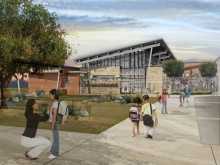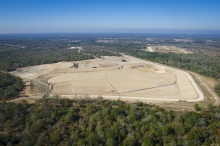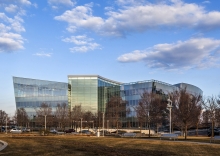A "library park" in a Colombian barrio serves functions beyond those of either a library or a park. State-funded programs operated through the institution provide an underprivileged community with educational and other services, making the Parque Biblioteca Espa�a a symbol of hope for the city of Medell�n.
Giancarlo Mazzanti�s Parque Biblioteca Espa�a is located in the city of Medell�n, home to more than 3.3 million residents and capital of the coffee-producing province of Antioquia. The city is situated in the Aburr� Valley of the Andes Mountains, in the geographically diverse country of Colombia. Medell�n runs the length of the Aburr� Valley, extending fingers and palms up steep slopes to the ridges that contain and proclaim its identity as a highland haven and, per the prevailing weather conditions, the City of Eternal Spring. Its unique geographic qualities allow the entire span of Medell�n to be seen from the surrounding mountain ridges; conversely, these ridges can be seen from any point along the river bisecting Medell�n�s core, the Rio Medell�n. Along Medell�n�s western slope in the Santo Domingo Savio barrio sits the Parque Biblioteca Espa�a, articulating through its rough-hewn envelope the city�s mountainous boundaries � a distinct point of pride for its inhabitants.











